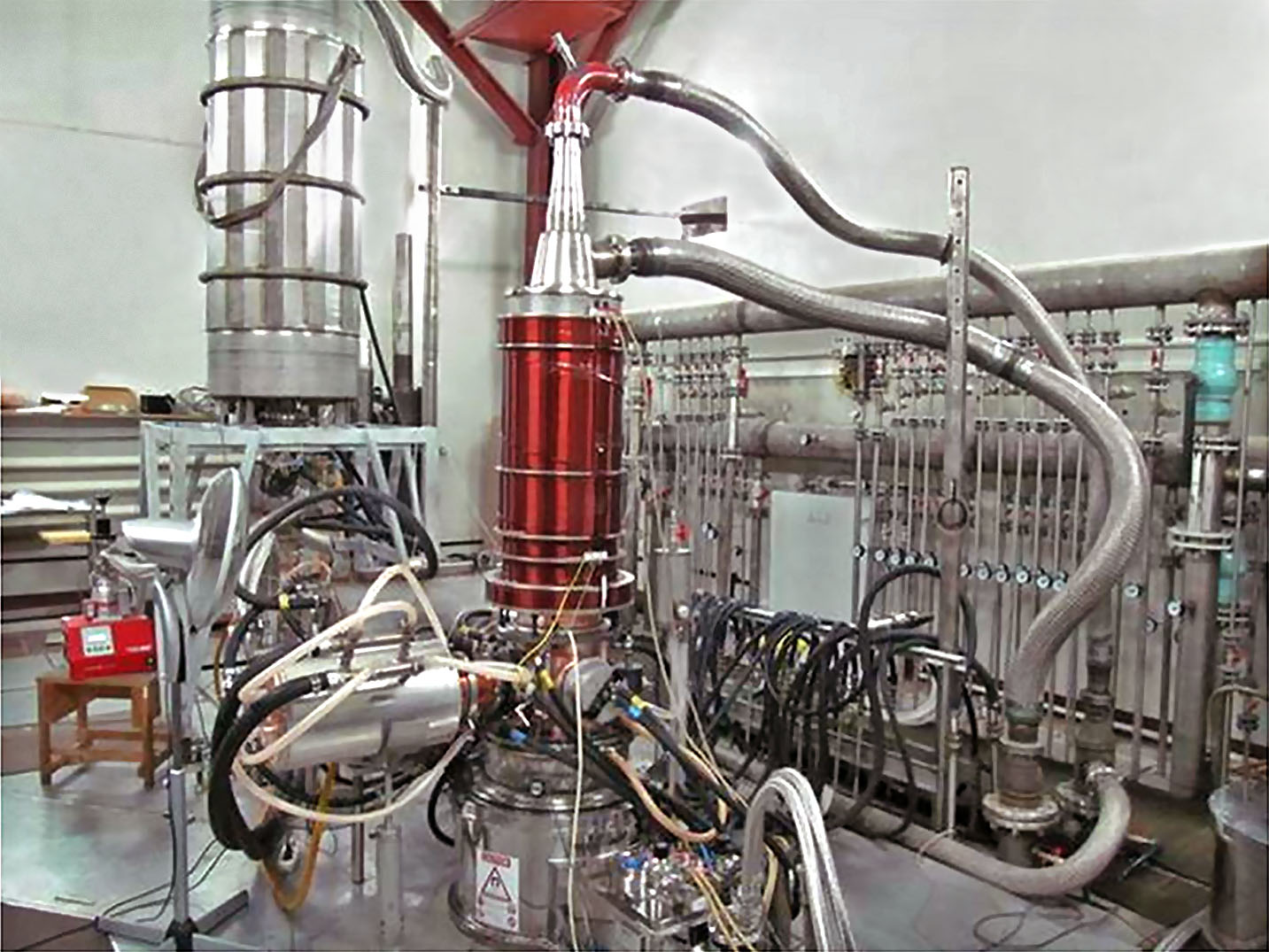Speaker
Description
Introduction
Electron cyclotron systems of fusion installations are based on powerful millimetre wave sources – gyrotrons, which are capable to produce now megawatt microwave power in very long pulses. Gyrotrons for plasma fusion installations usually operate at frequencies 40-170 GHz. Requested output power of the tubes is about 1 MW and pulse duration is between seconds and thousands seconds (depending on plasma machine parameters). To provide operation with indicated parameters the gyrotrons have very large transverse cavity sizes, output barrier windows made of CVD diamond discs, electron beam collectors apply effective energy recovery. The main partners in the development of gyrotrons in Russia are the Institute of Applied Physics and industrial company GYCOM Ltd. The most developed gyrotrons are now the tubes for ITER which demonstrate parameters corresponding to ITER requirements. High-level parameters were also achieved with long-pulse 140 GHz gyrotrons developed for EAST and KSTAR installations. Some steps were done in development of higher frequency (230-700 GHz) gyrotrons for future plasma installations and for plasma diagnostics. Novel ideas were proposed to enhance gyrotron operation.
170 GHz gyrotron for ITER
In ITER installation there will be 24 gyrotron systems with 1 MW power each. Russian contribution consists of 8 gyrotron systems. ITER requirements include also high efficiency of the gyrotrons over 50%, possibility of power modulation with frequency up to 5 kHz, compatibility of the gyrotron complex with ITER control system. Development of the gyrotron system for ITER is based on solution of many very difficult scientific and engineering problems. At present the main purpose of the system modification is an enhancement of the system reliability and implementation of all gyrotron systems into ITER machine and its control and safety system.
In May, 2015 a Russian Prototype of ITER Gyrotron System was completed and its operation was demonstrated. The system includes gyrotron oscillator, liquid-free superconducting magnet, supplementary magnets, several electric power supplies, cooling systems control and protection systems, and other auxiliary units. The gyrotron system shows reliable operation with required parameters. In 2016-2019 three serial gyrotron systems were fabricated. All these three ITER gyrotron systems showed reliable operation in 1000 second pulses at megawatt power and efficiency higher than 50% (fig.1). The gyrotron microwave beam fed with low losses the corrugated HE11 waveguide of 50 mm diameter. The measured X-ray radiation and stray microwave radiation do not exceed safety levels. One more 170 GHz ITER gyrotron was delivered for EU team for testing microwave components.

Higher power and higher frequency gyrotrons
Development of a higher power gyrotron in Russia is going on along two directions: power enhancement in well tested gyrotron operating at TE25.10 mode and development of a new gyrotron with a new operating mode – TE28.12. Detail analysis of the test results showed that a slightly modified ITER gyrotron prototype is capable to operate at power 1.2 MW. First tests of the modified tube are rather encouraging: microwave power 1.2 MW at MOU output was demonstrated in 100 second pulses with efficiency of 53%. The gyrotron prototypes with TE28.12 operating mode were tested at 1.2 MW power with pulses up to 500 seconds.
Calculations of higher frequency gyrotrons for future plasma installations (230-300 GHz) were done. The calculations show that 0.2-0.3 MW gyrotrons can be made on the base of easily commercially available 10T magnets with 100 mm bore diameter. 1 MW tubes require at least 150 mm diameter magnets. 0.2 MW/ 260GHz/ CW tube is now in fabrication. Microwave power of 200 kW was demonstrated with a 660 GHz pulse gyrotron. CW megawatt power gyrotron with 230 GHz frequency is under development. 10 T magnet for the gyrotron with 150 bore is in fabrication by JASTEC. Simulations also show that using the gyrotron frequency stabilization and oscillator phase locking helps to provide stable gyrotron operation at very high modes (as TE56.24), at very high frequencies (as 350 GHz) with megawatt power. are encouraging. The latter parameters are required for future plasma machines with high magnetic fields.
References
- ITER NEWSLINE. 26Feb, 2018. https://www.iter.org/newsline/-/2931
- http://www.iterrf.ru/
- M.K.A. Thumm, G.G. Denisov, K. Sakamoto and M.Q. Tran. High-power gyrotrons for electron cyclotron heating and current drive. Nucl. Fusion 59 (2019) 073001 (37pp).
| Affiliation | Federal Research Center Institute of Applied Physics RAS |
|---|---|
| Country or International Organization | Russia |
